Top 8 Longest Rivers in Hungary
Hungary is a landlocked country in Central Europe that shares borders with Slovakia, Ukraine, Slovenia, Serbia, Romania, Austria, and Croatia. Hungary is ... read more...organized geographically into three primary divisions, each of which is further subdivided into seven smaller regions. Hungary's most valuable natural resource is its fertile terrain, with 70% of the nation suited for agriculture. Hungary has numerous rivers that supply water to the entire country. Toplist has compiled a list of the longest rivers in Hungary in the article below.
-
The Danube is Europe's second-longest river, running through sections of Germany, Austria, Slovakia, Croatia, Serbia, Bulgaria, Moldova, Ukraine, and Romania, with its drainage basin extending into nine further states and pouring into several towns, including four national capitals. The Danube River drains into the Black Sea.
The Danube was home to some of the first human societies, and its tributaries are key rivers in the nations through which they run. It is the primary supply of drinking water for about 20 billion people in Baden-Württemberg, Germany. The Danube River is also a great place to fish, though its popularity has declined in recent years.
The Danube banks of Budapest, which are also a tourist destination packed with remarkable landmarks, are Unesco World Heritage Sites. With a length of 1,777 miles, the Danube is also a popular natural and tourist attraction. It is also known as the longest river in Hungary.
Length: 1,777 miles (shared with Germany, Austria, Slovakia, Croatia, Serbia, Bulgaria, Moldova, Ukraine, and Romania)
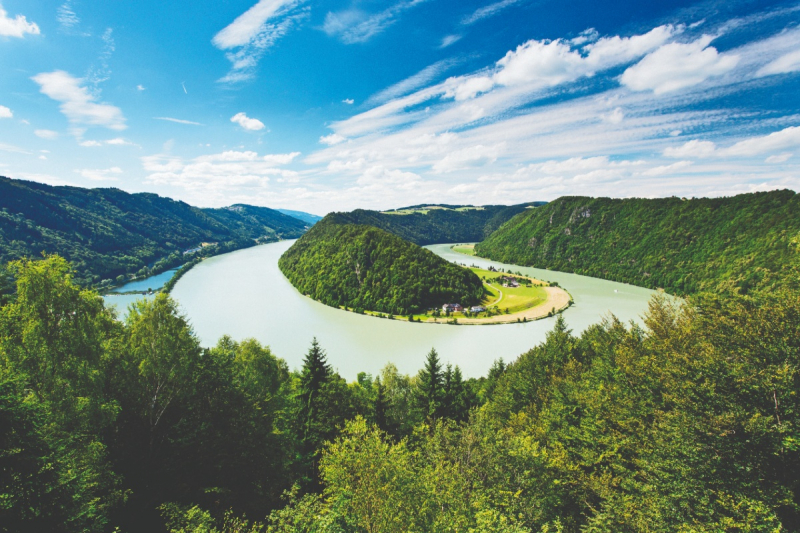
Danube (photo: https://www.cruisetradenews.com/) 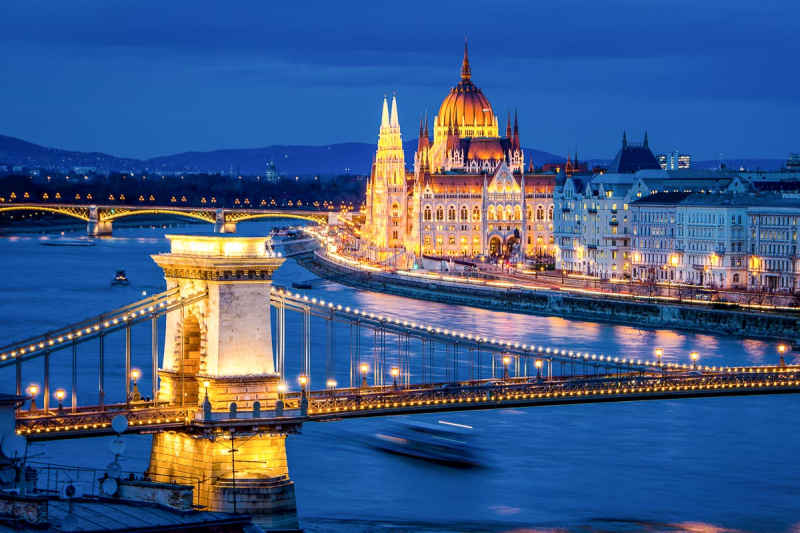
Danube (photo: http://redsvn.net/) -
The Tisza is one of Central Europe's most important rivers, flowing through four countries: Serbia, Romania, Ukraine, and Hungary. Because it ran wholly within the Kingdom of Hungary, it was previously known as the Most Hungarian River. It is the second-longest river in Hungary.
The Tisza River flows from Rakhiv in Ukraine to the Danube in Serbia. Tisza Dam was erected in the 1970s to assist in flood control and water storage, but it has instead become one of Hungary's most famous tourist attractions. However, it was only recently that it was opened to international navigation following the country's accession to the European Union.
The Tisza River is also home to a diverse assortment of fauna, including 200 bird species. Pollution is the most serious threat to the Tisza River, where a series of pollution episodes caused by industrial spillage in Romania killed a large number of fish in the early 2000s.
Length: 600 miles (shared with Ukraine, Romania, Slovakia, and Serbia)
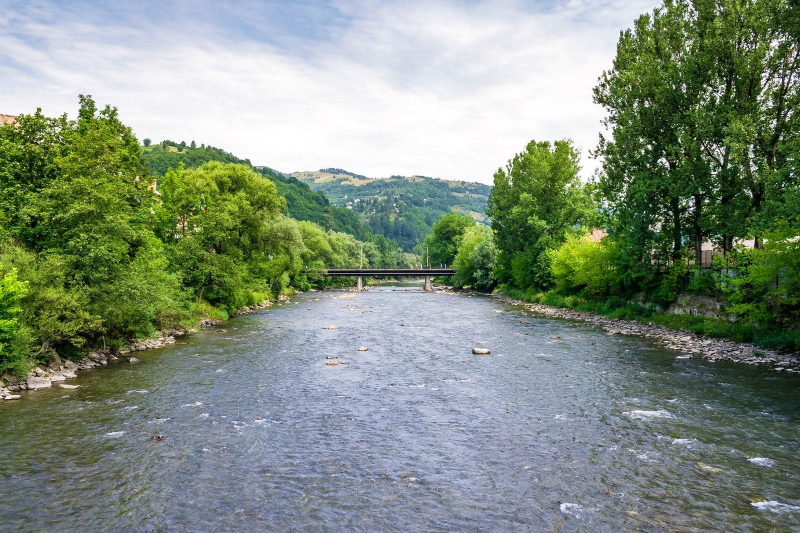
Tisza (photo: itinari.com) 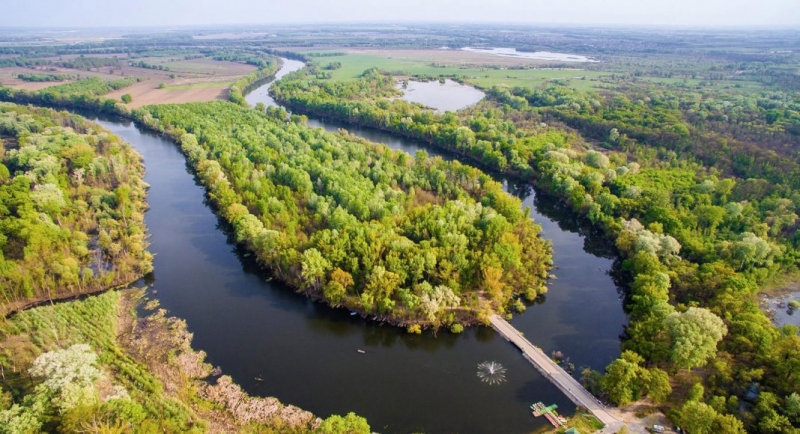
Tisza (photo: https://vilagutazo.net/) -
The Mureş is a river in Eastern Europe that runs for 490 miles. It is the third-longest river in Hungary. The river rises in the sources of the river Olt in the Hăşmașu Mare Range of Romania's Eastern Carpathian Mountains and enters the Tisza at Szeged in southeastern Hungary. Its length in Romania is 473 miles.
The Mureș River runs through the Romanian counties of Harghita, Mureș, Alba, Hunedoara, Arad, and Timiș, as well as the Hungarian county of Csongrád. Târgu Mureș, Alba Iulia, Deva, and Arad in Romania, and Makó in Hungary, are the largest cities on the Mureș.
The Hungarian sections of the Mureş are 45 miles long and run parallel to the state border. The Körös-Maros National Park encompasses 11.0 square miles on the river's northern bank. The Maros Floodplain Protected Area comprises gallery woods, floodplain meadows, and a forest reserve in Szeged. In medieval times, salt was traded on the river in enormous rafts.
Length: 473 miles (shared with Romania)
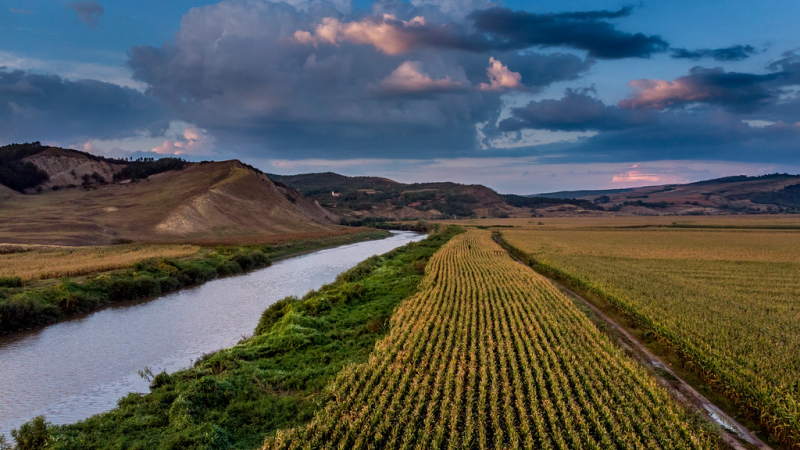
Mureș (photo: Tinu Coman) 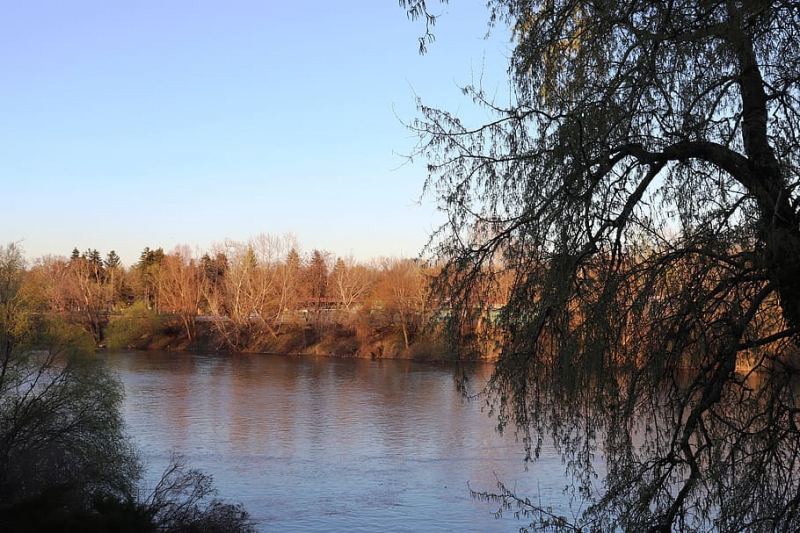
Mureș (photo: https://www.wallpaperflare.com/) -
The Drava is a river in southern Central Europe. It is the fifth or sixth-longest tributary of the Danube, after the Tisza, Sava, Prut, Mureș, and possibly the Siret, with a length of 456 miles including the Sextner Bach source.
Its source is in the Puster Valley of South Tyrol/Alto Adige, Italy, near the market town of Innichen/San Candido. The Drava River runs eastward through Austria's East Tirol and Carinthia into Slovenia's Styria region. It then turns southeast, going through Croatia and, after joining its main tributary Mur, forming the majority of the border between Croatia and Hungary before joining the Danube near Osijek.
In terms of hydropower, the Drava River is one of the most exploited rivers in the world, with about 100 percent of its water potential energy being used/ Because the river's region has unique biodiversity, this creates various ecological concerns, in addition to other types of exploitation such as the usage of river deposits.
Length: 465 miles (shared with Italy, Austria, Slovenia, and Croatia)
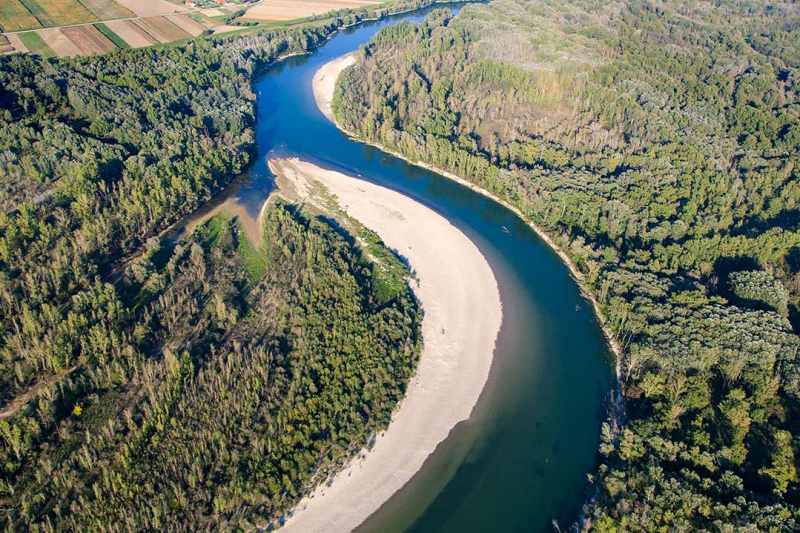
Drava (photo: https://www.drava-life.hr/) 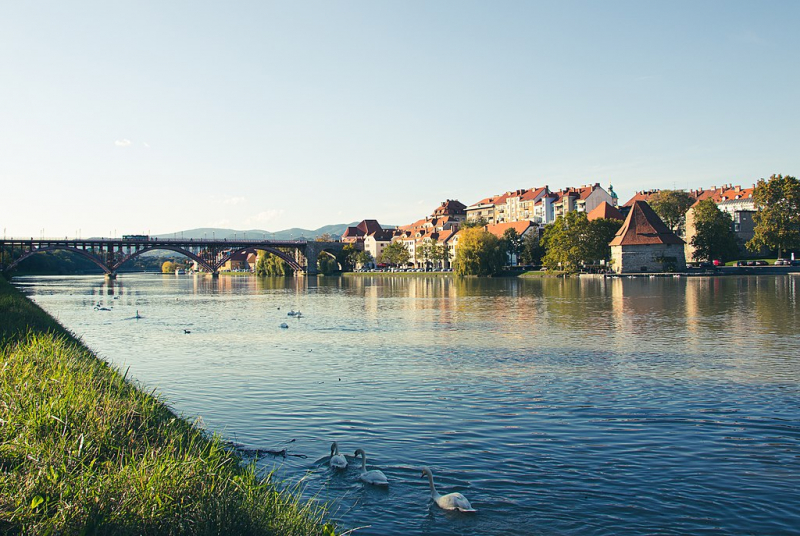
Drava (photo: https://commons.wikimedia.org/) -
The Mura, or Mur, is a river in Central Europe that begins in the Hohe Tauern national park in Austria's the Central Eastern Alps. It flows into the Drava and, eventually, the Danube. The Mur is approximately 464 kilometers long in total (288 miles). Approximately 326 kilometers are within Austria's borders; 95 kilometers pass through and around Slovenia (67 kilometers along the borders with Austria and Croatia, 28 kilometers within Slovenia), and the remaining forms the border between Croatia and Hungary. It is the fifth-longest river in Hungary.
The name Mur River is most likely of Slavic origin, having been nominalized from the adjective *mur 'dark,' which means 'dark water.'
The Mur is known to carry small amounts of gold, not enough to be exploitable now, but it has long been a focus of activity for many people. In 1772, organized exploration and usage of gold and other natural resources were fostered for the first time.Length: 288 miles
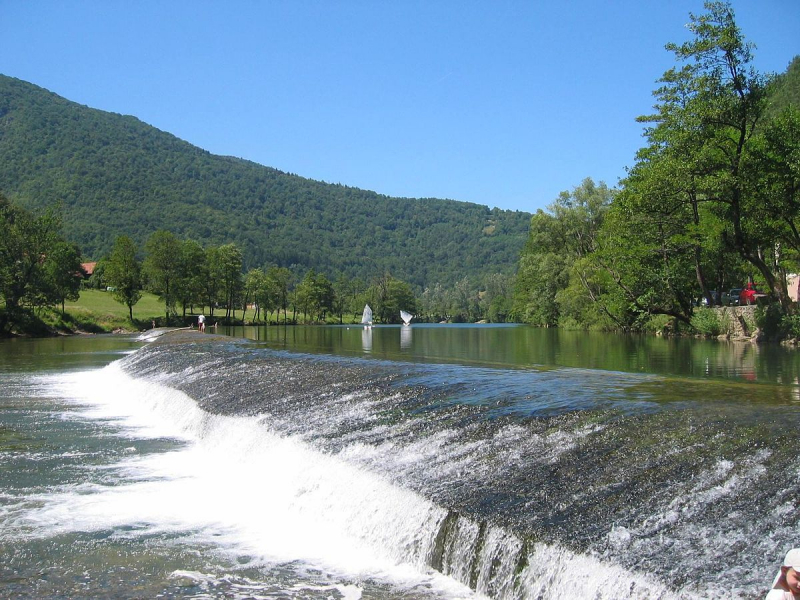
Mura (Mur) (photo: https://riverwatch.eu/) 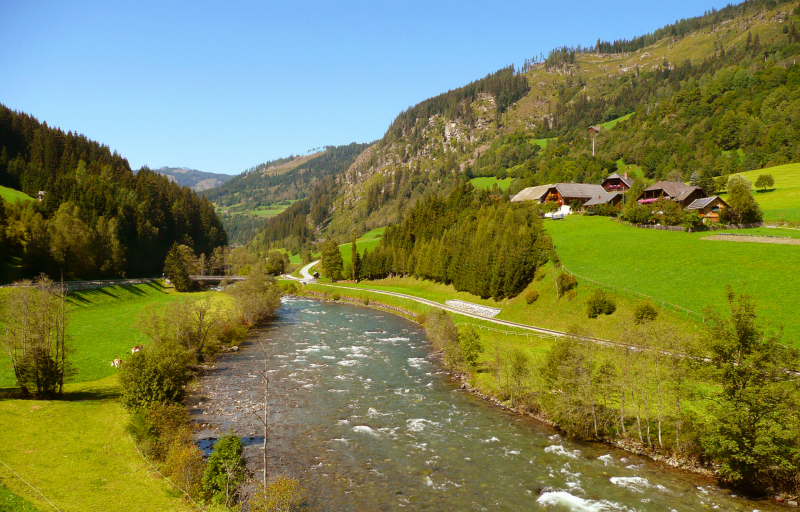
Mura (Mur) (photo: https://en.wikipedia.org/) -
Next on our list of the longest rivers in Hungary is Rába. The Rába is a right tributary of the Danube that flows through southern Austria and western Hungary. Its source is in Austria, a few kilometers east of Bruck a der Mur, beneath the Heubodenhöhe Hill. It runs across Austria's Styria and Burgenland, as well as Hungary's Vas and Győr-Moson-Sopron counties. It is 247 miles long and is shared with Austria. It flows into a tributary of the Danube in Győr, in northwestern Hungary.
Gleisdorf and Feldbach (both in Austria), as well as Szentgotthárd and Körmend (in Hungary), are towns along the Rába. The river used to flow in the opposite direction in the early Cenozoic, but tectonic uplift reversed its flow. In antiquity, the Rába was mentioned as Latin Arrabo and Greek Arabon, Raba and Hrapa in AD 791, and ad Rapam in 890. The river's contemporary names are derived from the Romance reflex Rābo. The name is most likely Indo-European, although its origin is uncertain.
Length: 247 miles (shared with Austria)
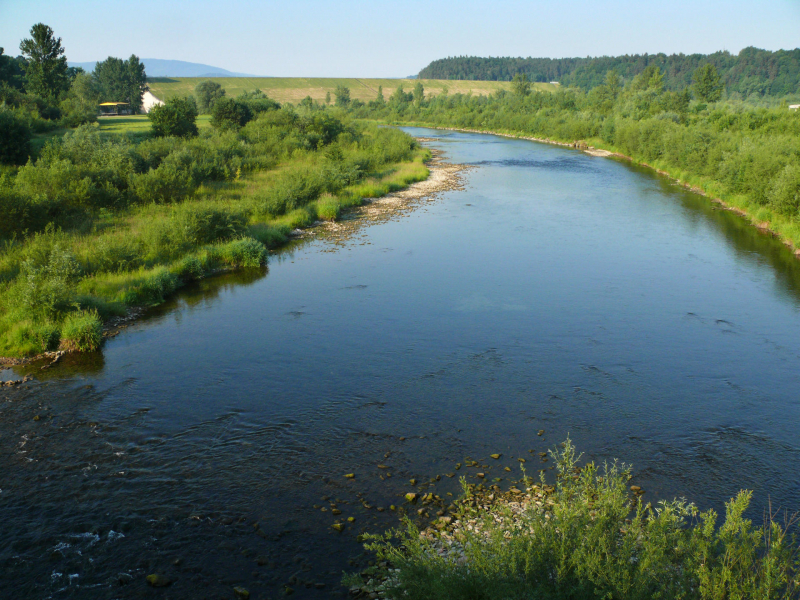
Rába (photo: https://upload.wikimedia.org/) 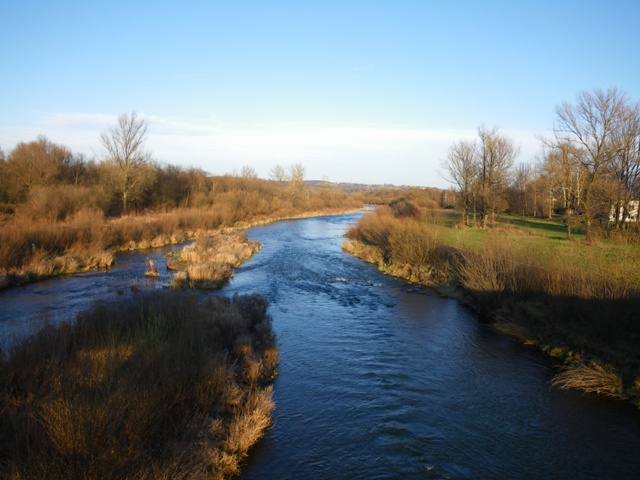
Rába (photo: https://przewodnicywedkarscy.pl/) -
The Someş is a Tisza tributary that flows through Hungary and Romania. It is 241 miles long including its source river Someșul Mare. The Someș is Hungary's seventh longest river. The hydrographic basin is formed by the confluence of the Someșul Mare and Someşul Mic rivers in Mica, a commune about 4 kilometers upstream of Dej. Someșul Mic originates in the Apuseni Mountains, whereas Someșul Mare originates in the Rodna Mountains.
Someșul Mare has a length of 130 kilometers, an area of 5,033 square kilometers, and a little asymmetry in favor of the basin's left side. For the entire Someș basin, the asymmetry on the left gets more evident between Dej and Ardusat, then reverses after getting the Lăpuș on the right side. The valley of Someșul Mare is rich in auriferous alluvium, which was brought to the surface using conventional methods until the early twentieth century. According to experts, gold grains weighing 21 carats were discovered in the Someșul Mare.
Length: 241 miles (shared with Romania)
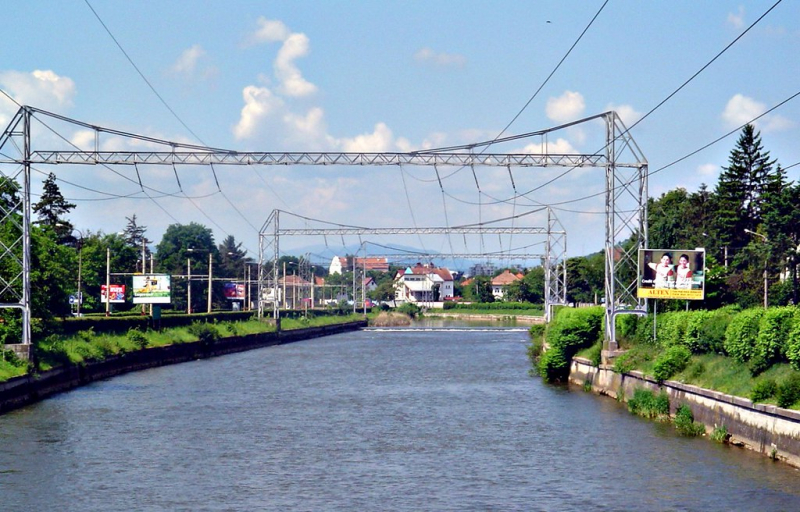
Someș (photo: CameliaTWU) 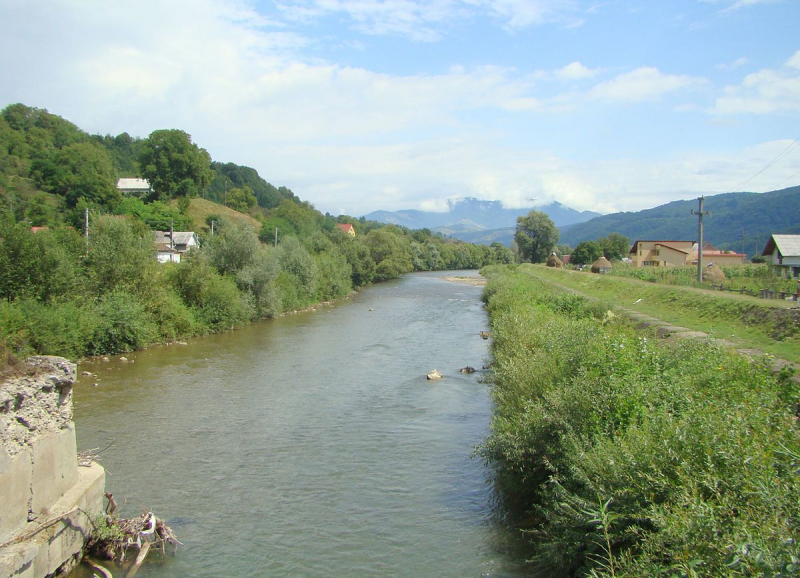
Someș (photo: https://en.wikipedia.org/) -
Hornád is known as the eighth-longest river in Hungary. It is a river in eastern Slovakia and northern Hungary. This river is a tributary of the Slaná River (Sajo). The Hornád originates on the eastern slopes of Kráľova hoľa hill, south of Šuňava.
The river is 286 kilometers long, with 178 kilometers in Slovakia and the remaining 108 kilometers in Hungary.
Spišská Nová Ves and Košice, both in Slovakia, are cities along Hornád's path. It flows into the Sajó (Slovak Slaná) river southeast of Miskolc. Along the river, there are six different limestone stony cliffs and steep slopes that make up the Site of Community Importance 'Hornádske vápence.'
Other long rivers in Hungary are Crișul Alb which is 147 miles and Ipeľ which is 144 miles.
Length: 178 miles (shared with Slovakia)
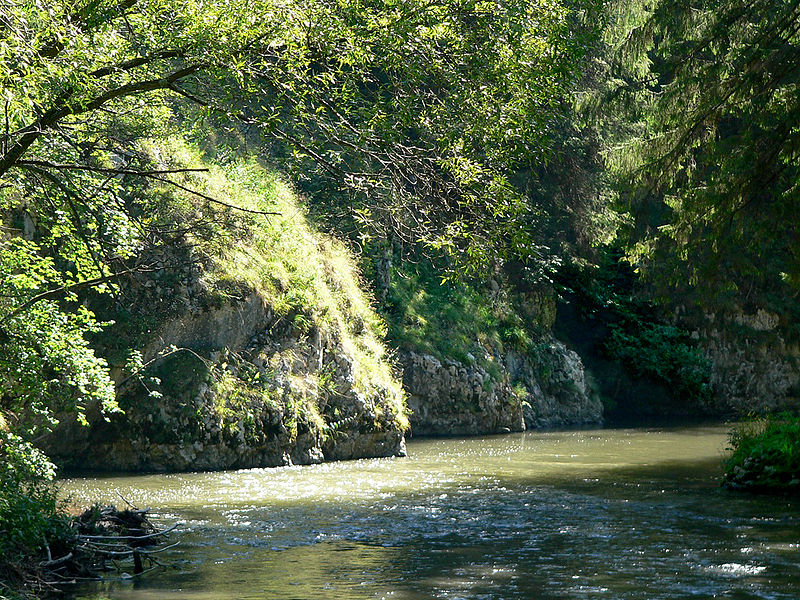
Hornád (photo:https://en.wikipedia.org/) 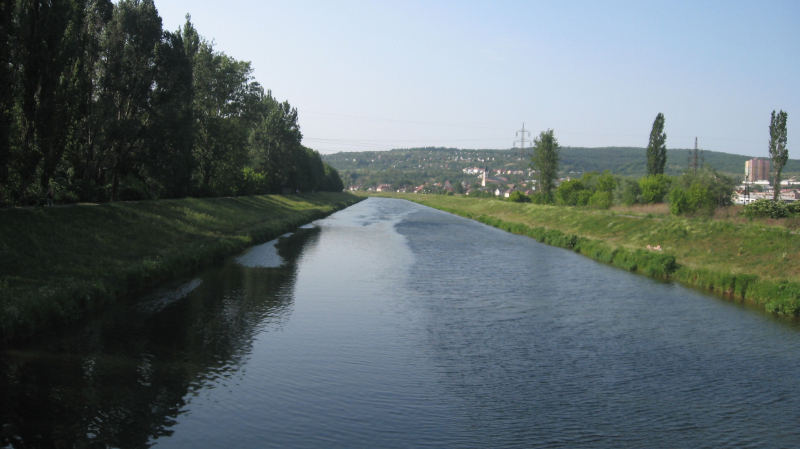
Hornád (photo:https://commons.wikimedia.org/)





























